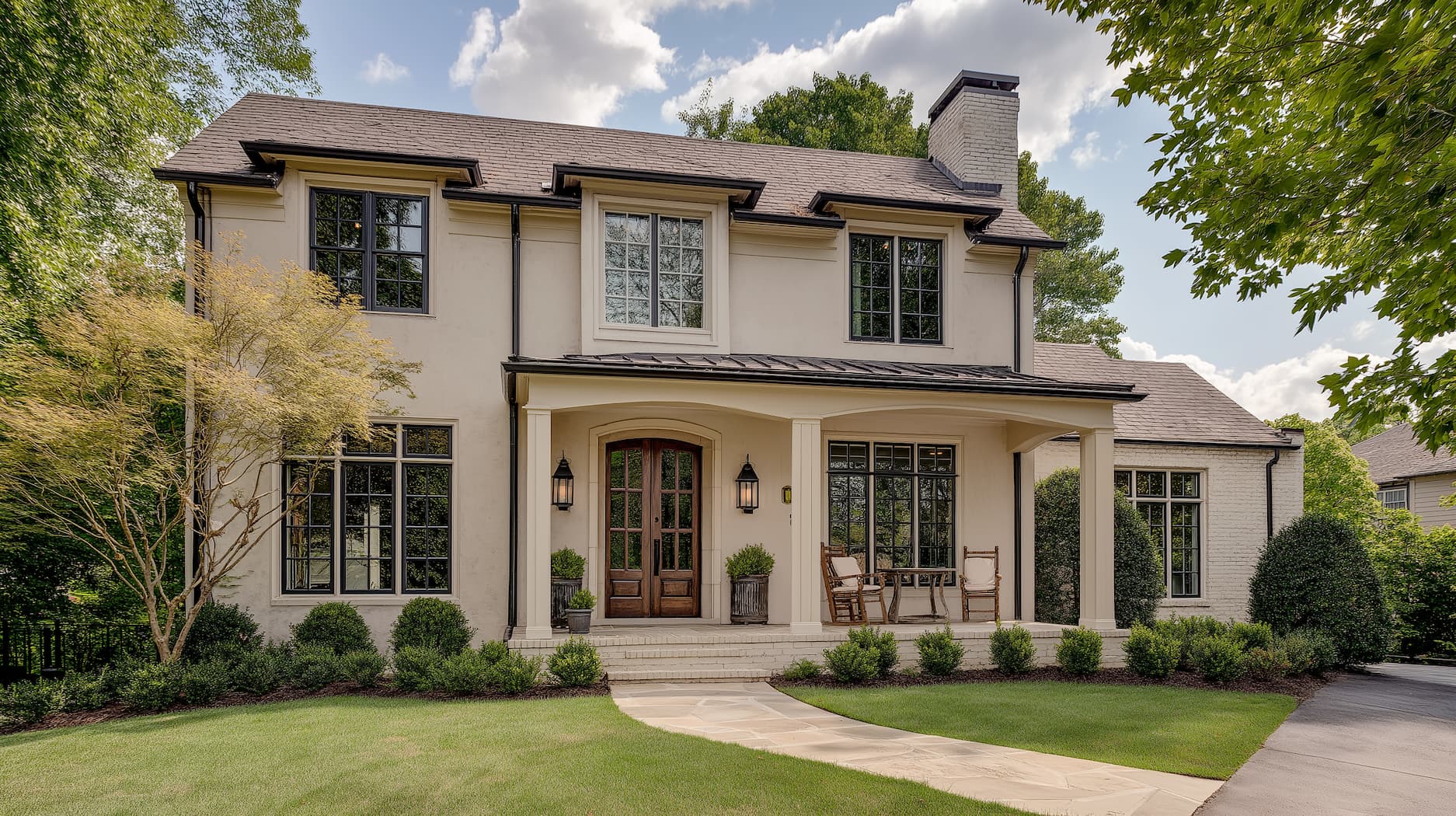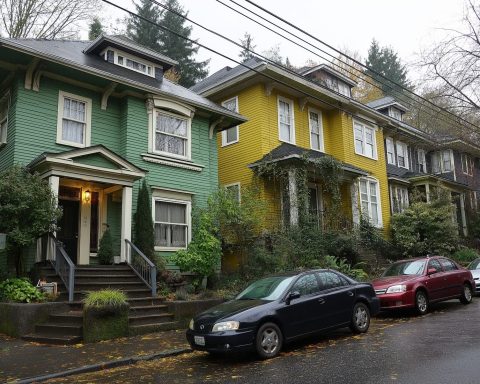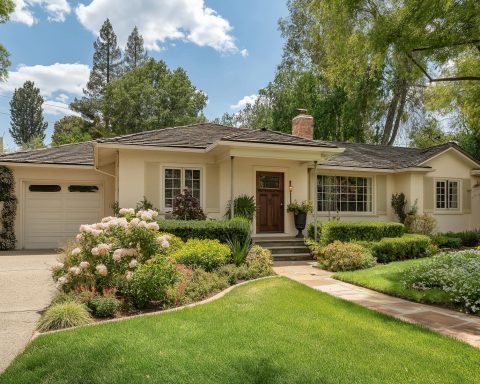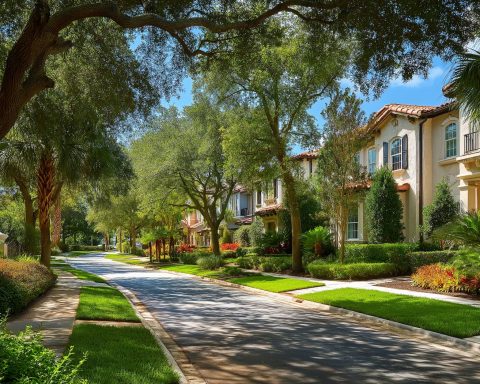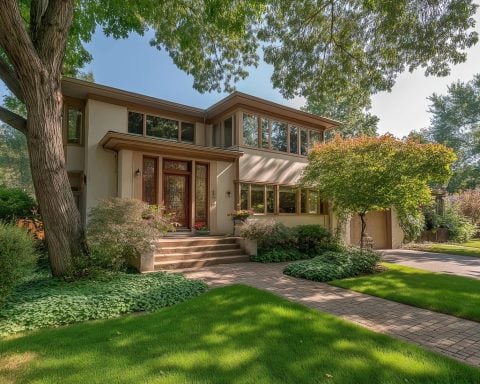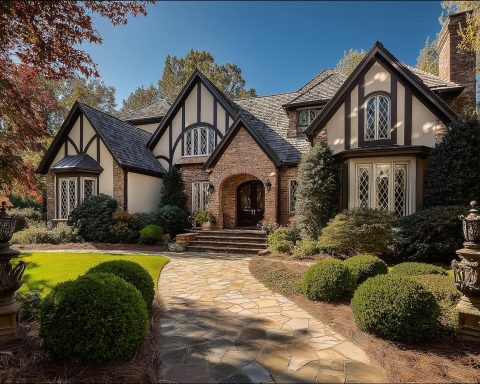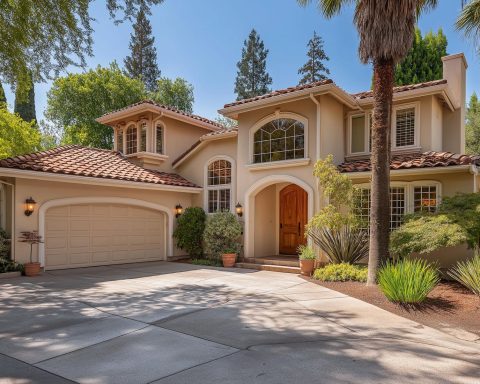Nashville’s real estate market in 2025 remains dynamic and growth-driven, fueled by steady in-migration, a resilient economy, and ongoing development. While the frenzy of 2021–2022 has calmed, home prices continue to rise modestly, buyer demand persists, and inventory is expanding from historic lows. Commercial real estate is a tale of two worlds – booming retail/industrial sectors versus a softer office market – as the city’s rapid population and job growth buttress most property types. In this report, we break down key trends in residential, commercial, and rental markets; spotlight hot neighborhoods and upcoming projects; review policy shifts; examine demographic drivers; and present a 3–5 year forecast for Nashville’s real estate landscape.
Residential Real Estate Trends in 2025
Home Sales and Prices: After a brief cooling in 2023, Nashville’s residential market in 2025 is stabilizing into a healthier balance. Home sales have picked up slightly – June 2025 saw 3,185 closings, about a 5% increase over June 2024 notyourordinaryagent.com. Ongoing in-migration and job creation are sustaining demand, even as higher mortgage rates tempered the frenzy of prior years. Median home prices continue to notch moderate gains. As of mid-2025, the median single-family home price sits around $528,000, up ~4.6% year-over-year notyourordinaryagent.com. This is a far cry from the double-digit annual jumps seen during the pandemic boom, but it signals steady appreciation rather than a bust. (In comparison, condo prices have dipped slightly, down ~1.4% YoY to about $340,000 notyourordinaryagent.com, as that segment faces increased inventory and more selective buyers.)
Buyer Demand and Market Balance: Nashville’s housing market has essentially moved into a “Goldilocks zone” of relative balance in 2025. Bidding wars have cooled, giving buyers breathing room, yet well-priced homes still sell. The Market Action Index sits around the low-30s (on a 100-scale), indicating a slight seller’s advantage – neither a rampant seller’s market nor a true buyer’s market nestinginnashville.com nestinginnashville.com. Homes are taking longer to sell than in the frenzy era: average days on market has stretched to ~105 days (median ~67 days) nestinginnashville.com, a dramatic change from the 15–20 day sales of 2021. In fact, about 42% of listings undergo price cuts before selling nestinginnashville.com, underscoring that realistic pricing is now crucial. Buyers have regained some negotiating power, and they can take time for inspections and financing without rushing nestinginnashville.com. Sellers, meanwhile, must adjust expectations – gone are the days of naming any price and getting it; strategic pricing and good property preparation are key nestinginnashville.com.
Inventory and New Construction: After years of severe housing shortage, inventory is finally on the upswing. There were ~14,416 properties on the market in June 2025 across Greater Nashville, a 28% increase from a year prior notyourordinaryagent.com notyourordinaryagent.com. The number of homes for sale, while still not abundant, is significantly higher than the drought of 2021–2022. This growth comes from a combination of new construction deliveries and resales. Builders ramped up production in 2022–2024, and those units are hitting the market; at the same time, more homeowners are listing now that the ultra-seller’s market has normalized. With more supply, buyers have options – which leads to longer selling times and more tempered price growth. Notably, Nashville’s inventory buildup is strongest in single-family homes and condos (each up ~30–36% YoY) notyourordinaryagent.com notyourordinaryagent.com, while lot/land listings grew more slowly. Despite the inventory gains, local planning studies warn of a housing shortfall ahead: Nashville needs an estimated 90,000–120,000 new homes in the next decade, yet on current trends only ~70,000 will be built wsmv.com. This has spurred policy action (discussed later) to enable more housing. For now, the increased inventory means Nashville’s market is shifting toward neutral conditions – a welcome change from the turbocharged recent past, but still with enough demand to keep prices edging up.
Commercial Real Estate Trends (Office, Retail & Industrial)
Nashville’s commercial real estate sectors present a mixed picture in 2025. Retail and industrial properties are thriving on the back of population growth and business expansion, whereas the office market remains subdued due to higher vacancies and cautious corporate demand post-pandemic. Below we break down each segment:
Office Market
Occupancy and Rents: Nashville’s office sector is navigating a post-COVID adjustment period in 2025. The metro’s office vacancy rate stood around 18.4% as of March 2025 commercialsearch.com – elevated compared to Nashville’s own history, but still below the 19.9% national average commercialsearch.com. In other words, nearly one in five office spaces is empty, reflecting both new supply coming online and companies optimizing their footprints in the hybrid-work era. Average asking rents for office space are about $31.64 per sq. ft., slightly under the U.S. average ($33) and placing Nashville among the more affordable office markets for tenants commercialsearch.com. Rent growth is relatively flat; landlords are competing for quality tenants with concessions as vacancy remains high.
New Supply and Development: Remarkably, Nashville has one of the largest office construction pipelines relative to its size. As of Q1 2025, about 1.5 million sq. ft. of office space was under construction (≈2.5% of existing inventory), with several big projects set to deliver by late 2025 commercialsearch.com. In fact, when including planned projects, the pipeline equates to nearly 4.8% of the market – on par with Manhattan in raw volume commercialsearch.com. High-profile developments like Nashville Yards (a huge mixed-use project downtown) and the planned Oracle campus (more on that later) are keeping builders busy. The flip side is supply-side pressure: new offices are hitting a market that is still absorbing space, which will likely keep vacancy in the mid-to-high teens in the near term. Office investment sales have also slowed to a trickle due to rising interest rates – only two office properties traded in the entire first quarter of 2025, with sales volume down ~63% year-over-year commercialsearch.com commercialsearch.com. On average, Nashville office buildings sold for ~$130 per sq. ft. in early 2025, a relative bargain by national standards commercialsearch.com.
Outlook: The office sector’s recovery is muted. Nashville’s job growth and company relocations (AllianceBernstein, Amazon’s hub, etc.) provide a tailwind, but it may take several years to backfill all the new and vacant space. One positive trend – the rise of office-to-residential conversions. With nearly 21 older office buildings (totaling ~1.7 million sq. ft.) identified as prime candidates for adaptive reuse commercialsearch.com commercialsearch.com, developers have opportunities to turn underused offices into apartments or condos, easing the office glut while adding housing. In sum, expect Nashville’s office market to remain tenant-favorable in the short term, with vacancy gradually tightening by late-decade as the economy expands into the new space.
Retail Market
Vacancy and Rents: Nashville’s retail real estate is one of the hottest in the nation. Thanks to explosive population growth and strong consumer spending, retail vacancy in the metro is hovering around 3.2–3.3% matthews.com matthews.com – exceptionally low. In fact, retail vacancies have been stuck below 3.5% since early 2022 matthews.com, indicating virtually full occupancy in many shopping centers. Some suburban submarkets are even tighter: a few areas entered 2025 with vacancy under 1%, notably Mt. Juliet–Lebanon and parts of Dickson and Robertson counties marcusmillichap.com. This acute undersupply of store space has pushed rents sharply upward. Average asking retail rent in Nashville reached $29.32 per sq. ft. in Q2 2025, up about 4.8% year-over-year matthews.com. Cumulatively, retail rents are up over 33% since 2020 matthews.com – a testament to how in-demand space is, as well as the higher-quality new construction raising the price ceiling. Landlords have pricing power given the lack of options for retailers; even big-box vacancies from national closures are quickly backfilled by new tenants at higher rents matthews.com.
Demand Drivers: Consumer demand in Music City is booming, fueled by job growth, rising tourism, and an influx of new residents. Nashville’s metro population grew 7.7% from 2020 to 2024 (adding ~160,000 people, far above the U.S. average growth of 3.1%) matthews.com, and retail development simply hasn’t kept up – hence the tight market. Shoppers have returned enthusiastically post-pandemic, and Nashville’s draw as a regional retail hub is growing. Downtown retail is also thriving, with lease rates on prime corridors (Broadway, Gulch, etc.) soaring to record highs – e.g. downtown asking rents hit ~$25/sf NNN in 2024, up 33% since 2020 globest.com. In suburban nodes, new retail centers are pre-leasing briskly. Notably, outlying communities with big housing growth have seen retail rents jump $10/sf in a year (as happened in Mt. Juliet and Dickson County) marcusmillichap.com, reflecting intense demand for shops and restaurants to serve growing rooftops.
Construction and Outlook: Developers have been cautious in adding retail supply, which is prolonging the landlord’s market. Only ~113,000 sq. ft. of new retail space delivered in Q2 2025, and about 600,000 sf in the past year – below historical averages matthews.com matthews.com. Roughly 708,000 sf is under construction metro-wide matthews.com matthews.com (only ~0.6% of inventory), and a large share of that is pre-leased, so it won’t dent vacancy much. Thus, barring a consumer spending downturn, Nashville’s retail sector should stay very tight. Expect low vacancies to persist and rents to keep rising at a healthy clip (perhaps in the 4–5% annual range) given limited new space. For investors, retail properties have been attractive: annual retail investment volume hit $1.0 billion in the past year – the highest in two years – with cap rates in the low-6% range amid fierce competition for assets matthews.com matthews.com. Overall, Nashville retail is a landlord’s dream right now – high demand, low vacancy, and strong rent growth, making it one of the country’s most robust retail real estate markets.
Industrial Market
Supply and Vacancy: Nashville’s industrial real estate (warehouses, distribution centers, manufacturing space) has been on a rapid growth trajectory. Developers added massive square footage in recent years to capitalize on the logistics boom. More than 10 million sq. ft. of new industrial space opened in 2023 alone lumicre.com, and as of Q2 2025 another 8 million sq. ft. is under construction across the metro matthews.com matthews.com. This construction wave, heavily concentrated in the Wilson County and Southeast Nashville submarkets (which account for 80% of new space since 2020) matthews.com, has nudged vacancies up in the short term. The overall industrial vacancy rate stands around 6.0% in mid-2025 matthews.com, a bit higher than the ultra-tight ~4% levels of a couple years ago lumicre.com. In Q1 2025 it was reported at ~6.2% vacancy, up ~90 bps year-over-year savills.us. Essentially, some new warehouses are in lease-up, causing a temporary rise in availability. The availability rate (which includes sublease space and new deliveries) was roughly 8.9% in Q2 matthews.com, reflecting those speculative projects hitting the market. However, underlying demand remains strong – certain quarters are still seeing net positive absorption. For example, in Q1 2025 Nashville logged +216,000 sf of industrial absorption (48% higher than Q1 2024) colliers.com, though Q2 saw a dip into negative absorption as big projects came online matthews.com.
Rents: Industrial rents in Nashville have surged to record highs. The metro now boasts one of the highest industrial rent levels in the Southeast at around $12.00 per sq. ft. on average matthews.com. That average blends a range: large bulk warehouses (100k+ sf) are leasing around $10.50/sf, whereas smaller modern facilities under 100k sf (in hottest demand) can command $14/sf matthews.com. Despite the influx of new supply, rents rose ~5.9% year-over-year as of Q2 2025 matthews.com matthews.com. In recent years, industrial rents have been on a tear – Q2 asking rates were ~10% higher than a year prior according to some broker reports, and up roughly 35–40% since 2018 (reflected in the fact that price per SF for industrial assets has doubled since 2018 in sales) matthews.com. The driver is the robust demand from e-commerce, logistics (Nashville’s central location is a distribution sweet spot), and manufacturing tenants (including auto sector suppliers and new tech assembly operations). With vacancy still relatively low and much of the new space pre-leased or quickly absorbing, rent growth in Nashville’s industrial market continues to outpace the national average matthews.com.
Outlook: The industrial sector outlook is largely positive, though we may see a slight cooling as the construction pipeline peaks. Nashville’s population and job growth are attracting warehouse users and light manufacturers at a steady clip. Big players like Amazon (with its Operations Center here) and numerous 3PLs have expanded in the region. Given 8 million sf under construction, vacancy might elevate a bit more (into the 6–7% range) in the next 1–2 years, but importantly, over 65–70% of new space is pre-leased matthews.com matthews.com or build-to-suit, which limits the glut risk. As those projects fill, absorption will catch up. In fact, projections show vacancy drifting back down and stabilizing in the mid-4% range by 2026–27 as demand catches up with supply lumicre.com. Rents are expected to keep climbing, albeit at a moderating pace (perhaps mid-single-digit % gains annually) given the high base. Industrial investment remains hot: Nashville recorded $1.2 billion in industrial property sales in the past year matthews.com, and cap rates have compressed as institutional investors pour in. The bottom line – Nashville’s industrial market is expanding rapidly but remains fundamentally strong, underpinned by a strategic location and economic growth that should ensure those new warehouses don’t stay empty for long.
Rental Market Analysis (Multifamily)
Nashville’s apartment rental market in 2025 is at an inflection point, transitioning from a period of heavy supply growth toward a phase of rebalancing and tightening. Here’s the breakdown:
Supply Surge Easing: Developers delivered a record number of new multifamily units in Nashville over 2021–2023, which pushed vacancies up and tempered rent growth in the short term. In 2024, the apartment vacancy rate climbed into the 8–9% range as thousands of new units hit the market. By mid-2025, however, the wave is cresting. Completions year-to-date 2025 total roughly 4,700 units northmarq.com – still elevated historically, but down from the peaks of prior years as builders pull back. Many developers have scaled down starts to focus on leasing up existing projects northmarq.com. It’s projected that about 9,000 new units will be delivered in total for 2025, which is significantly below the recent highs (2022 saw well over 10k units) northmarq.com. This gradual tapering of new supply, combined with Nashville’s continued population gains, is relieving pressure on the rental market.
Vacancy and Absorption: There are clear signs that vacancy rates have peaked and are beginning to trend down. In Q2 2025, Nashville recorded a quarterly improvement in vacancy – renter demand in key urban and suburban submarkets outpaced new deliveries for the first time in a while northmarq.com. Overall apartment vacancy, which started 2025 above 8%, is now on track to dip below 8.0% by year-end northmarq.com, according to Northmarq analytics. The momentum should continue thereafter, with vacancies “trending toward historical norms” by late 2026 northmarq.com (Nashville’s pre-boom norm was around 5–6% vacancy). This positive shift is driven by strong absorption: demand for rentals remains healthy, bolstered by job growth and would-be homebuyers renting longer due to high interest rates. Particularly, downtown Nashville and select suburbs (e.g. Madison/Rivergate area, Mt. Juliet, and Sumner County) are seeing robust lease-up activity, tightening those submarkets northmarq.com.
Rent Trends: Rents had been essentially flat in 2023 amid the flood of new supply, but they are now ticking up again as the market absorbs units. In Q2 2025, a modest rent uptick was noted alongside the vacancy drop northmarq.com. Average effective rent in the Nashville metro is currently around $1,600–$1,700 per month for a typical 2-bedroom, depending on the source. Forecasts predict that by 2026, average rents will reach roughly $1,730 per month northmarq.com, implying a resumption of consistent rent growth. That would mark a 3–4% annual growth pace, which is more sustainable compared to the double-digit rent surges seen in 2021. Landlords of newer Class A buildings have had to offer concessions over the past year to fill units, but those giveaways are likely to diminish as conditions tighten in late 2025 and 2026. Importantly, Nashville’s rent levels remain affordable relative to coastal cities, which continues to draw newcomers to its rental market.
Rental Demand Drivers: The demographics and job trends are firmly supporting Nashville’s rental sector. The city attracts many young professionals, creatives, and recent graduates (a large cohort of millennials and Gen Z), who often rent before buying. Major employers in healthcare and tech continue to hire, bringing in relocating workers who often choose to rent initially. Additionally, Nashville’s status as an entertainment and university hub feeds rental demand (students, touring professionals, etc.). The metro gains dozens of new residents daily (about 66 people per day moving in) nestinginnashville.com, and not all can or want to buy homes immediately, meaning a steady pipeline of renters. The build-to-rent trend is also emerging: single-family home rental communities are being developed to cater to those who want a home and yard but choose to rent. All these factors point to a rental market that, after digesting a construction boom, is set to tighten back up. By late 2025 and beyond, expect apartment landlords to regain pricing power, vacancies to edge down toward mid-single-digits, and rent growth to accelerate modestly.
Investment and ROI: For real estate investors, Nashville’s rental properties hold strong appeal. Capital is still targeting Nashville multifamily – transaction volume in early 2025 was on par with 2024 by number of deals, and total dollar volume actually jumped nearly 70% year-over-year (thanks to several large institutional acquisitions) northmarq.com. Buyers are especially keen on newer Class A/B communities, which comprised ~70% of properties traded so far in 2025 northmarq.com. Pricing has been resilient; the median sale price for 50+ unit properties was about $221k/unit in 1H 2025, slightly up 1% from 2024 northmarq.com. Cap rates have begun to compress again in mid-2025 as rent outlook improves northmarq.com, a signal of returning investor confidence. Overall, with rental fundamentals set to improve (lower vacancy, resumed rent growth) and the prospect of interest rates falling in late 2025, Nashville’s multifamily market is poised for solid performance. Investors can reasonably expect annual rent increases in the 3–5% range over the next few years and potential appreciation if they buy well-located assets before the market fully tightens.
Investment Opportunities and ROI Projections
Nashville’s strong economic trajectory and population growth continue to make it a compelling market for real estate investors in 2025. Opportunities span residential and commercial segments, with generally favorable returns projected over the coming years:
- Residential (Flip & Hold Investments): Home values in Nashville have shown remarkable long-term gains – rising roughly 150% over the last decade mcsquaredluxury.com. While future growth will be calmer, forecasts still predict steady appreciation. Zillow’s models project around +3.4% home price growth through 2025 mattwardhomes.com, and some analyses foresee 4–6% annual appreciation through 2028 mcsquaredluxury.com in the Nashville metro. This suggests that buying and holding property in Nashville can yield solid equity growth. Investors seeking rental income can also benefit from competitive yields: Nashville’s rents relative to purchase price often produce rent-to-value ratios in line with or above national averages. A typical single-family rental or condo can achieve ~8–12% gross rental ROI (rent as % of purchase price) depending on neighborhood rentastic.io – making it attractive for cash-flow investors. Short-term rentals (Airbnb/VRBO) in tourist-heavy areas are especially lucrative, often generating above-average ROI due to Nashville’s booming tourism scene mcsquaredluxury.com. Popular spots like downtown, The Gulch, or near Broadway can command high nightly rates from the ~15+ million annual visitors (a figure expected to reach 17.5 million by 2025, according to local tourism estimates). However, investors must navigate local STR regulations (which limit non-owner-occupied rentals in some zones).
- Commercial Investments: On the commercial side, retail and industrial properties offer strong prospects. Retail centers benefit from low vacancy and rising rents – investors have poured over $1 billion into Nashville retail in the past year matthews.com. With cap rates in the mid-6% range matthews.com and rent growth ~5% annually, retail assets can deliver a healthy total return (income + appreciation). Some suburban retail submarkets are so undersupplied (vacancies <1% marcusmillichap.com) that new development or value-add retail projects could capture outsized rent jumps (indeed, rents in certain suburbs leapt $10/sf last year marcusmillichap.com). Industrial real estate is another hot ticket: Nashville’s average industrial cap rates are in the 5.5%–6.5% range, and investor demand is intense as the sector’s fundamentals are among the best in the region. With industrial rents climbing ~6%+ per year and land constraints in core submarkets, owners of well-located warehouses can expect increasing NOI and property values. It’s notable that industrial sale prices/SF have doubled since 2018 in Nashville matthews.com – a reflection of both rent growth and cap rate compression – and while that pace won’t repeat, the outlook remains bullish.
- Office and Specialty: The office sector is more of a contrarian play. Depressed values (avg ~$130/sf sale price commercialsearch.com) and high vacancies mean investors can acquire office buildings at a relative discount. The key is location and repositioning. Investors with a stomach for adaptive reuse might target older downtown office buildings for conversion to apartments or mixed-use, leveraging the city’s push for revitalization. Additionally, niche sectors like healthcare real estate (medical offices) remain stable bets given Nashville’s huge healthcare industry presence. Hotel investments are rebounding too, as Nashville’s tourism and convention activity surges back; the market recorded record hotel revenues in 2023–24 and continued growth into 2025, translating to renewed interest in hospitality development and acquisitions.
Bottom Line: Investors are drawn to Nashville for its long-term growth story – a diverse economy, no state income tax, rising population, and relative affordability all point to sustained demand. The market is maturing, so 20% annual home price jumps are likely gone, but in exchange there’s more stability. Annual returns in the high single-digits (combining income and appreciation) are attainable and realistic. As one real estate analysis put it, Nashville offers the rare combo of “strong appreciation potential with a tax-friendly environment” mcsquaredluxury.com. For those looking at 2025 and beyond, strategic investments in the right neighborhoods or asset classes in Nashville could yield very healthy ROI, especially if purchased before the next upcycle in property values.
Neighborhood Spotlights: Hotspots and Growth Areas
Nashville’s rapid growth is reshaping many neighborhoods, with formerly overlooked areas becoming real estate darlings. Here are some up-and-coming neighborhoods and key areas to watch, along with trends in gentrification and infrastructure that are driving their rise:
- East Nashville: Long known for its eclectic arts and music scene, East Nashville has fully emerged as a property hotbed. Young professionals and families have flocked here for the historic bungalows, trendy eateries, and creative vibe. In early 2025, East Nashville’s median home price was around $585,000 – up 10.8% from the previous year walkerluxuryandland.com. That steep appreciation reflects both low inventory and intense demand in this hip enclave. Areas like Lockeland Springs and Cleveland Park are seeing rapid gentrification: older homes are being renovated or rebuilt, and new mixed-use developments are popping up along main corridors. Despite rising prices, East Nashville remains slightly more affordable than West Nashville’s luxury enclaves, keeping buyer interest high. The neighborhood’s authenticity and walkability (think local favorites like Five Points and Riverside Village) ensure it will remain a top pick. Expect continued investment here, especially as the nearby East Bank mega-development (across the river) progresses, bringing parks, jobs (Oracle campus), and improved connectivity to East Nash.
- The Nations (West Nashville): A few years ago, The Nations was a modest industrial area; now it’s one of Nashville’s fastest-transforming neighborhoods. Located in West Nashville off 51st Avenue, The Nations has seen warehouses turned into popular breweries, studios, and eateries, attracting a hip crowd. New townhome and condo projects have filled many blocks, and home values have climbed accordingly. The area’s appeal lies in its walkable “main street” (51st Ave) with boutiques and restaurants, and its relatively central location with a quirky industrial-chic character. As an example of growth, a large mixed-use development, Silo Bend, added hundreds of residences. The Nations epitomizes the urban revitalization trend in Nashville: taking an old industrial district and creating a vibrant residential hub. Gentrification is well underway, but the neighborhood’s charm and relative affordability (compared to downtown) continue to drive demand. Investors are keen on The Nations for redevelopment opportunities, and new infrastructure (improved roads, greenways) is coming in to support the growing population.
- Wedgewood-Houston (WeHo): Just south of downtown, Wedgewood-Houston – or “WeHo” – is another gentrifying hotspot. This former industrial/artists’ neighborhood has become a magnet for development due to its proximity to the urban core and cultural cachet (it’s home to galleries, maker spaces, and the Nashville Design District). In recent years, WeHo has welcomed new condo buildings, adaptive reuse projects, and trendy venues (like the Nashville NYC FC soccer stadium nearby, and the Soho House). The influx of breweries, coffee shops, and tech startups has turned WeHo into a live-work-play destination. Home prices and rents have risen as young professionals seek alternatives to pricey downtown. The neighborhood is also benefiting from infrastructure improvements: the city has targeted the WeHo area for upgraded transit connections and streetscapes to handle growth. As these changes continue, expect WeHo’s warehouse lofts and modern townhomes to appreciate further, though affordability and displacement of long-time residents remain ongoing concerns in this gentrification story.
- Madison & Rivergate (North Nashville suburbs): Not all the hot areas are in the urban core – some first-ring suburbs are heating up too. The Madison area (a community ~8 miles north of downtown) and nearby Rivergate/Sumner County are seeing increased development interest. Traditionally more blue-collar and affordable, these areas offer larger lots and easier commutes up I-65. Now, as Nashville grows, developers have started building new housing (including townhomes and apartments) in Madison to meet demand for lower-cost options. In fact, Madison/Rivergate is cited as a spot where multifamily momentum is growing – new suburban apartment complexes are leasing up strongly northmarq.com. Retail and commercial growth is following the rooftops, with vacancy rates extremely low for retail in outlying submarkets. Madison’s relatively low home prices are inching up as investors renovate older ranch homes and first-time buyers discover the area. Infrastructure upgrades like the upcoming transit center in Madison and plans to improve Gallatin Pike’s bus service could further boost these neighborhoods. In summary, keep an eye on North Nashville communities that are transitioning from overlooked to up-and-coming, offering more bang-for-buck while still tying into the metro’s growth.
- Downtown & East Bank Redevelopment: Nashville’s urban core is itself evolving, thanks in part to massive infrastructure projects. The East Bank (east side of Cumberland River, across from downtown) is undergoing a transformational plan. With the new Tennessee Titans stadium approved in 2023 (a $2+ billion enclosed stadium set to open by 2027) planning.org, the East Bank will anchor a 350-acre mixed-use redevelopment featuring parks, greenways, housing, and transit improvements planning.org planning.org. In tandem, Oracle Corp. has planned a $1.2 billion tech campus in River North (East Bank) slated to host 8,500 jobs planning.org. These projects are turning what used to be empty industrial lots into the city’s next great neighborhood. We can expect new condos, apartments, and retail to spring up in East Bank adjacent areas (Germantown, East Nashville’s waterfront) to serve the influx of jobs and visitors. Already, developers have proposed over $2.2 billion in projects in anticipation planning.org. Downtown Nashville, meanwhile, continues to thrive with projects like Nashville Yards, the Fifth + Broadway development, and numerous high-rise residential towers reshaping the skyline. Gentrification concerns accompany this boom – as shiny new towers rise, affordability downtown is an issue, and efforts are being made to include affordable housing in plans like Imagine East Bank planning.org planning.org. Nonetheless, the downtown/East Bank area is without doubt a focal point of infrastructure investment that will elevate property values in surrounding neighborhoods over the next 5 years.
Policy, Regulation & Zoning Updates
Several policy and zoning developments in 2025 are poised to impact Nashville’s real estate landscape, especially in terms of housing supply and development patterns:
- Zoning Reform for “Missing Middle” Housing: In August 2025, Metro Nashville is advancing a major zoning overhaul aimed at creating more affordable and dense housing options in traditionally single-family neighborhoods wsmv.com wsmv.com. The Metro Planning Department, as part of a Housing & Infrastructure study, found that the region needs upwards of 100k new homes in the next decade to meet demand wsmv.com. To enable this growth, planners have proposed two new residential zoning categories – tentatively called Residential Neighborhood (RN) and Residential Limited (RL) wsmv.com. These would allow forms of “middle housing” (like duplexes, triplexes, townhomes, cottage courts) to be built in areas that previously only permitted single-family homes wsmv.com. The idea is to gently densify neighborhoods without high-rises, adding housing types that fit the scale of the community. Importantly, the proposal includes height limits to preserve neighborhood character – preventing tall structures from towering over existing homes wsmv.com. Community meetings and feedback sessions were held through August 2025, with the Planning Commission and Metro Council expected to review the changes in late 2025 wsmv.com. If adopted, this reform could be a game-changer: it would open up many residential areas for infill development, potentially spurring a wave of new townhome and small multiplex projects in 2026 and beyond. The goal is not only to meet housing demand but to create more walkable, livable communities by mixing housing types wsmv.com. Of course, there’s debate – some residents fear increased density could fuel gentrification or alter neighborhood feel wsmv.com. Planners are balancing these concerns via public input and phasing. Overall, this zoning update is a proactive step to address Nashville’s housing crunch and steer growth smartly.
- Short-Term Rental Regulations: Nashville has a well-known love-hate relationship with Airbnb and short-term rentals (STRs). In recent years the city imposed regulations to limit STR density in residential zones and require permits, especially after some neighborhoods complained of “party houses.” As of 2025, those regulations remain in effect – non-owner-occupied STRs are restricted in many residential zones and must obtain a permit (which can be capped per census tract). Enforcement has tightened, with the city revoking permits for violators and levying steep fines for illegal STR operation. For investors, this means due diligence is needed before buying a property for Airbnb use. The upside is that in tourist-friendly zones (like downtown, The Gulch) where STRs are allowed, occupancy and rates are high, making it a lucrative but limited niche. There’s ongoing policy discussion about possibly adjusting STR rules (either loosening them to boost tourism capacity, or tightening further to protect housing stock), but no major changes have been passed in 2025 thus far. It’s a space to watch, as any future ordinance changes could affect property values for condos/homes used as STRs.
- Property Tax Reappraisal 2025: Nashville/Davidson County underwent a property reappraisal in 2025 (as part of its regular cycle). Due to the significant rise in property values since the last cycle, many owners saw substantial increases in their assessed values. However, Tennessee law mandates the property tax rate be adjusted (certified) so that the overall reappraisal is revenue-neutral to the county (excluding new construction). In 2025, Metro Council indeed lowered the tax rate after reappraisal to offset value jumps. The net effect for many homeowners was a moderate tax bill increase, but not proportional to the huge value gains of the past few years. This keeps Nashville’s property taxes relatively reasonable – an important factor for investors (Tennessee has no state income tax, so property tax is a key revenue source but is still moderate compared to some states). Looking ahead, any significant tax policy changes (such as new incentives or tax-increment financing for developments) will influence the real estate climate. As of 2025, Nashville continues using tools like PILOT (payments in lieu of taxes) to incentivize certain affordable housing and commercial projects, and there’s discussion about expanding such programs to ensure development benefits broad community goals.
- Infrastructure and Planning Initiatives: The Metro government is also leveraging policy to guide growth via infrastructure. The Imagine East Bank plan (tied to the new stadium, mentioned earlier) is a city-led master plan ensuring zoning and urban design in that district promote mixed-use, transit, and flood resilience planning.org planning.org. Additionally, Nashville is exploring transit improvements – while a 2018 mass transit referendum failed, the city has since invested in better bus service (e.g., rapid bus lines) and is studying future commuter rail possibilities. In 2025, there’s renewed talk at the regional level of a Nashville transit authority plan for the next decade, which could influence transit-oriented development zones if it comes to fruition. On the regulatory front, streamlining permitting and codes is another focus: Metro has been updating building codes and permitting processes to be more efficient for developers, particularly to encourage more housing.
In summary, Nashville’s policy environment in 2025 is actively addressing the challenges of growth. Zoning reforms for density, careful planning of mega-projects, and attention to housing affordability (through incentives and potential inclusionary zoning in specific projects) are all on the table. These measures aim to ensure that the city’s development is sustainable and inclusive – and they will shape what, where, and how new projects come to market in the coming years.
Demographic & Migration Patterns Impacting Housing
People are the engine of Nashville’s real estate market. Over the past decade, the Nashville metro area has been one of the fastest-growing regions in the U.S., and 2025 is no exception. Understanding who is moving to (and staying in) Nashville – and why – is key to gauging housing demand:
- Continued Population Growth: Nashville’s population growth is robust and shows no signs of stopping. From 2020 to 2024, the metro added roughly 160,000 new residents, a 7.7% increase in just four years matthews.com. For perspective, that growth rate is more than double the national average (3.1%) in the same period matthews.com. As of 2025, the Nashville metropolitan area’s population is approximately 1.35 million mattwardhomes.com. This reflects a ~1.3% annual increase from 2024 – a very healthy clip for a U.S. city. In raw numbers, it equates to 66+ people moving to the Nashville area every day nestinginnashville.com on average. Such steady inflows create constant demand for housing, whether to buy or rent. Greater Nashville’s growth isn’t just a city phenomenon; surrounding counties like Williamson, Rutherford, Wilson, and Sumner are also swelling as people spread out in search of homes.
- Domestic In-Migration: A huge chunk of Nashville’s growth comes from domestic migration – people relocating from other states or regions. Nashville has been a magnet for those leaving higher-cost, slower-growth areas. Notably, there’s been an influx of residents from California, the Northeast, and Midwest, drawn by Nashville’s comparatively affordable housing and booming job market. The city’s cost of living advantage (no state income tax, reasonable home prices by national standards) is a big draw for folks from, say, New York or Los Angeles who can sell a home there and buy in Nashville at a fraction of the price. Additionally, many are coming from other Southeastern states (Atlanta, Florida, etc.), as Nashville’s cultural scene and job opportunities have blossomed. The net migration into Nashville has consistently ranked among the top in the country in recent years. This domestic inflow skews towards younger professionals and families in their 20s-40s, boosting demand for both urban rentals and suburban starter homes.
- Jobs and Economy as Magnets: The primary reason people come to Nashville is economic opportunity. The region’s unemployment rate in early 2025 was just about 3.2% (near historic lows) assets.cushmanwakefield.com, and job growth outpaces the nation. Key industries are drawing talent: healthcare, anchored by giants like HCA Healthcare and Vanderbilt, provides tens of thousands of high-paying jobs. Technology is rising fast – Amazon’s Operations Center of Excellence opened in downtown (5,000 jobs), and Oracle’s future campus promises thousands more tech roles mcsquaredluxury.com mcsquaredluxury.com. The music and entertainment industry remains a staple – not just artists, but a whole ecosystem of music business professionals reside here, along with a booming hospitality sector to serve tourism mcsquaredluxury.com. And don’t forget automotive and advanced manufacturing in the broader region (Nissan’s huge plant is just down the road in Smyrna, TN). In short, Nashville’s diversified economy (healthcare, tech, music, education, logistics) provides a stable foundation that attracts job-seekers from across the country. As these people arrive, they fuel demand for apartments initially and homes when they settle long-term.
- Youthful Demographics: Nashville’s demographic profile skews on the younger side, which influences housing preferences. The city has a high concentration of millennials and a growing Gen Z population, thanks to its universities and lifestyle appeal. The median age in Nashville is around mid-30s. This means a large cohort of people in prime household formation years – a recipe for strong housing demand. Younger professionals often rent in vibrant neighborhoods (like Midtown, Germantown, East Nashville) before eventually buying. Their preferences (for walkability, amenities, smaller households) drive development of urban apartments and townhomes. At the same time, as some millennials age into their 30s and start families, many are seeking suburban houses, which is boosting demand (and prices) in family-friendly suburbs and adding to the suburban boom.
- Migration for Lifestyle: It’s worth noting that not all movers come purely for jobs – quality of life is a major pull. Nashville’s reputation as “Music City,” with its rich cultural scene, food, and entertainment, makes it attractive to those who could work from anywhere. In the remote work era, some have chosen Nashville for its vibrant lifestyle and lower cost of living, while keeping their remote jobs from other states. The city’s relatively mild climate (apart from hot summers) and central location are bonuses. Additionally, Nashville has become a popular retirement destination for some Baby Boomers seeking milder winters than the Midwest/Northeast but with more culture and hills than Florida – this trickle of retiree migration adds to housing demand in certain areas (e.g., active adult communities around Nashville’s outskirts).
- Challenges – Affordability and Inclusion: The flip side of Nashville’s popularity is rising housing costs, which can strain lower-income and long-time residents. There are signs of out-migration among some locals who are priced out – for instance, some native Nashvillians relocate to cheaper parts of Tennessee or neighboring states as prices climb. Additionally, the city’s minority and lower-income populations have felt the squeeze from gentrification in urban neighborhoods. Nashville is trying to address this with affordable housing initiatives and keeping an eye on equitable development so that its growth doesn’t push out the very people who made the city what it is. Demographically, Nashville is diversifying: the region’s growth includes a rising Hispanic population and other immigrant communities, adding to the cultural fabric and housing needs (with some specific preferences for multigenerational housing, etc.).
In sum, Nashville’s demographic story is one of robust growth – an influx of young, educated talent, a steady stream of new families, and even some retirees, all drawn by the city’s economic prospects and cultural allure. This continuous population churn and growth underpins strong real estate demand across the board, and it’s a big reason experts remain optimistic about Nashville’s housing market resilience going forward.
Forecast for the Next 3–5 Years
What does the future hold for Nashville’s real estate through the rest of the 2020s? The outlook for the next 3–5 years (2025–2030) is broadly positive, though with a more moderate pace than the whirlwind of the early 2020s. Here is a breakdown of expectations by sector, assuming no major economic shocks:
Home Prices & Residential Market: Nashville’s home values are projected to keep rising, but at a controlled rate. Gone are the 15% annual spikes; instead think 3–5% yearly appreciation on average in the near term mattwardhomes.com mcsquaredluxury.com. Major forecasters (like Zillow) call for mid-single-digit percentage gains through 2025 and 2026, reflecting continued demand balanced by improving supply. This means a house worth $500K today might be roughly $580–600K in five years – meaningful growth, yet hopefully accompanied by income growth to maintain affordability. Sales volume is expected to increase slightly as interest rates stabilize or decline. If mortgage rates dip from their 2023–2024 highs (which were ~7%) down closer to 5–6% by 2026, many sidelined buyers will re-enter the market. That could boost transactions and possibly put mild upward pressure on prices beyond current forecasts. Still, Nashville should remain much more balanced than the frenzy years; the era of rampant bidding wars is likely over, barring an unexpected inventory crunch. New home construction will continue, especially if the city enacts the zoning reforms – we could see more townhome and infill development adding units. By 2030, Nashville will likely have tens of thousands of new homes, maintaining a healthier supply-demand equilibrium. Upshot: homeowners can expect solid equity gains, and prospective buyers might face modestly higher prices each year, but with more choices and saner conditions than a couple years ago.
Rental & Multifamily: The next few years should bring a strengthening rental market. The peak of new supply is passing, so by 2026–2027 the apartment vacancy rate should fall back toward ~5–6% (historical norm) northmarq.com. This tightening will give landlords leverage to raise rents at faster clips. We anticipate annual rent growth in the 3–4% range in 2025, potentially accelerating to 4–5% in 2026 as the market tightens. Average rents, which are around $1,600–$1,700 now, could approach $1,800+ by 2027 if trends hold northmarq.com. The development pipeline for multifamily is scaling down (approx 9,000 units in 2025, likely fewer in 2026), which should prevent oversupply. By 2027–2028, Nashville might even swing back to a need for more apartments, especially if population growth continues unabated. Investors in multifamily can expect improving NOI as occupancy rises and concessions burn off. Cap rates may compress slightly if interest rates fall, boosting property values. One thing to watch: the affordable housing gap. Nashville will need to address affordable rental options, as rent increases could outpace incomes for lower-wage residents. We might see more public-private partnerships and incentives to build affordable units in the coming years. Overall, the multifamily outlook is bullish – strong demand drivers will likely make Nashville one of the better-performing rental markets in the Southeast over the next 5 years.
Commercial Sectors:
- Retail: Expect continued outperformance. Nashville’s retail vacancy is forecast to remain very low (in the 3–4% range) because new construction is limited and demand keeps climbing. By 2028, even with new shopping centers built in growing suburbs, vacancies might only tick up slightly if at all, since population growth will have soaked up new space. Retail rents should therefore keep rising, though the growth rate may temper from nearly 5% now to perhaps 3–4% annually as the base rent gets higher. We may see more experiential and mixed-use retail projects (integrated in big developments like the East Bank or along transit corridors). Barring a recession that hits consumer spending, Nashville retail real estate is positioned to thrive. Investors will likely find cap rates staying low (around 6% or tighter) given the solid fundamentals.
- Industrial: The next couple of years will be about absorbing the huge wave of supply, but by 2027 the industrial market should regain an equilibrium. Vacancy might peak around 7% as remaining 2025 deliveries hit, then trend back down toward 4–5% by 2028 after those buildings lease up. E-commerce, logistics, and manufacturing growth in Middle Tennessee should persist, fueled by Nashville’s geographic advantages and infrastructure (the region is within a day’s drive of much of the U.S. population). We also expect rent growth to remain above inflation – perhaps 4–5% per year on average – given continued tenant demand (the recent slowing from 6%+ to sub-5% YoY rent growth suggests a maturing market) matthews.com. By 2030, Nashville will have a much larger industrial inventory, but still healthy, assuming no gross overbuilding beyond current plans. One wild card: large mega-projects like electric vehicle or battery plants could choose the area, which would spike demand for industrial space even more. In any case, Nashville’s industrial sector should remain a star performer, with high occupancy and solid ROI for owners.
- Office: The office market is the most uncertain. Over the next 3–5 years, we anticipate a gradual recovery but not a full return to pre-pandemic occupancy levels. New deliveries in 2025–26 will push vacancy near 20%, but from 2026 onward, job growth (particularly in tech and corporate relocations) should help start eating away at that excess space. By 2030, Nashville’s office vacancy could settle in the low-teens percentage – better than now, but likely still a bit above the ultra-tight <10% seen in 2019. Much depends on how work-from-home trends evolve; Nashville may benefit from being a lower-cost hub that firms consolidate into (some companies might move operations from high-cost cities into Nashville’s new offices). Office rents will probably stay relatively flat in real terms for a couple years, then pick up if vacancy materially improves by late decade. Any rent growth will likely lag inflation until the market truly tightens. One positive factor is that Nashville’s new office stock is high-quality, which could attract tenants and justify higher rents – for instance, the Nashville Yards and Gulch office towers may command premium rates. Also, as noted, adaptive reuse will remove some obsolete office stock from inventory. We expect several old office buildings downtown to convert to residential/hotel by 2028, which will help reduce office glut and revitalize those spaces. So, the forecast for office is cautious optimism: short-term pain, long-term stabilization. Investors with patience might find bargains now and reap rewards later if they repurpose or wait for the market to rebound.
Development & Infrastructure: The latter half of the 2020s will see major projects come to fruition. By 2027, the new Titans stadium will open, likely followed by a burst of development around it (entertainment district, hotels, etc.). The Oracle campus is expected to be operational by 2027–28, bringing thousands of tech workers – this will boost housing demand, especially in East Nashville and downtown, and could spur more condo towers and apartments to be built to accommodate them. The East Bank transformation (parks, mixed-use) will gradually roll out, enhancing the city’s attractiveness and potentially raising property values in adjacent neighborhoods. Additionally, Nashville’s airport (BNA), which underwent a major expansion (“BNA Vision”) completing in 2023, now has the capacity for more flights – by 2025 it’s breaking passenger records. More connectivity means more tourism and business travel, feeding into the real estate via hotels and need for more hospitality/retail space. If Nashville’s leadership advances transit plans by late 2020s (such as a potential bus rapid transit lines or a revived light rail proposal), that could unlock transit-oriented developments around new transit hubs in the 2030s.
Risks: No forecast is complete without noting risks. For Nashville, the main risks are macroeconomic – if the U.S. slips into a recession, Nashville’s real estate would feel it (sales slow, occupancy dips). A sharp spike in interest rates beyond what we’ve seen would also dampen demand. There’s also the question of overbuilding: if developers get too exuberant (especially in apartments or offices), that could lead to a glut that takes time to work through. And affordability is a looming challenge – if Nashville becomes too expensive relative to local incomes, it could temper the very migration that has fueled it, or force policy interventions that alter investor calculations.
All things considered, Nashville is well-positioned for growth. Its strong population influx, diversified economy, and proactive planning suggest that over the next 3–5 years, it will continue to be one of the nation’s real estate bright spots. Stakeholders can expect a period of more sustainable growth: modest annual home price increases, a rental market tightening beneficially, thriving retail/industrial sectors, and eventually a right-sized office sector. As one local real estate president noted, Nashville’s “continued resilience” is underpinned by in-migration and job growth that show no sign of abating notyourordinaryagent.com. In short, Nashville’s boom is evolving, not busting – and the coming years should see the city solidify its status as a vibrant, growing real estate market with opportunities for homeowners, renters, and investors alike.
Sources:
- Greater Nashville Realtors data and market reports notyourordinaryagent.com notyourordinaryagent.com notyourordinaryagent.com
- Local real estate market analysis (Nesting in Nashville, Aug 2025) nestinginnashville.com nestinginnashville.com nestinginnashville.com
- Cushman & Wakefield, Colliers, Marcus & Millichap research on Nashville office and retail markets commercialsearch.com marcusmillichap.com
- Matthews Commercial Real Estate Q2 2025 reports matthews.com matthews.com matthews.com matthews.com
- Northmarq Nashville multifamily insight Q2 2025 northmarq.com northmarq.com
- WSMV News – Metro Nashville zoning changes (Aug 2025) wsmv.com wsmv.com
- Matt Ward Realtors Nashville 2026 forecast (citing Zillow) mattwardhomes.com mattwardhomes.com
- McSquared Realty investment insights (Aug 2025) mcsquaredluxury.com mcsquaredluxury.com
- Planning Magazine (APA) – East Bank Development & Stadium (Nov 2024) planning.org planning.org
- Walker & Co. East Nashville market snippet walkerluxuryandland.com
- Greater Nashville demographic and economic highlights matthews.com mcsquaredluxury.com
